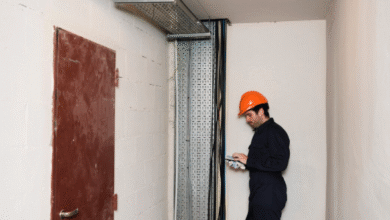What Qualifies as Replacement Property in a 1031 Exchange?

When it comes to building long-term wealth through real estate, investors often look for strategies that let their money grow without taking a hit from taxes. One of the most effective tools in this regard is the 1031 Exchange,a provision in the IRS tax code that, when used properly, can unlock years of tax-deferred growth.
But there’s a lot of confusion around what qualifies for a 1031 and, more importantly, what counts as a replacement property. Let’s break it down, step-by-step.
What Is a 1031 Exchange in Real Estate?
At its core, a 1031 Exchange,named after Section 1031 of the Internal Revenue Code,lets you sell one investment property and purchase another, while deferring capital gains taxes. The idea is to keep your investment money working for you, rather than handing a chunk of it over to the IRS after a profitable sale.
This exchange isn’t just a casual swap. To qualify, there are strict rules around timelines, the nature of the properties, and how the transaction is structured.
So, what is a 1031 Exchange really about? It’s about rolling your equity forward,taking gains from one asset and redirecting them into another, without stopping to pay taxes. But that’s only possible if you meet certain criteria.
What Qualifies as a 1031 Exchange?
Not every real estate sale will count. Here are the core rules that define whether a deal qualifies:
- Both properties must be held for investment or business purposes. Your personal home or a property meant for flipping won’t qualify.
- They must be “like-kind.” This doesn’t mean they have to be identical types,just that both are real estate investments. For example, you could exchange a warehouse for farmland or a rental home for an office building.
- You need to work with a Qualified Intermediary (QI). This third party holds the sale proceeds and facilitates the exchange. You’re not allowed to touch the money directly.
- Timelines are strict. You must identify potential replacement properties within 45 days of selling the original asset and close on one (or more) within 180 days.
Stick to these guidelines, and your deal may qualify. But the real heart of the strategy? It’s all about the replacement property.
What Qualifies as Replacement Property in a 1031 Exchange?
Now for the key question: what can you buy that counts as a replacement?
1. “Like-Kind” Means More Than You Think
Don’t let the term confuse you,“like-kind” doesn’t mean you must trade a house for a house. The IRS uses a broad definition here. Nearly all real property held for investment or productive use in a trade or business qualifies.
You can exchange:
- A rental duplex for a strip mall
- Undeveloped land for an apartment complex
- An office space for a self-storage facility
What doesn’t count? Your personal residence, a vacation home (unless it’s a rental), or property you’re holding as inventory to flip.
2. The Replacement Must Be of Equal or Greater Value
To defer all your capital gains, the new property,or combination of properties,must be worth the same or more than what you sold. If you downsize or pocket any leftover cash (called a “boot”), you’ll likely owe taxes on that amount.
3. You Must Follow the Identification Rules
Once you close the sale of your original property, the clock starts ticking.
- You have 45 days to identify your potential replacements.
- You must close on one or more within 180 days of the sale.
You can identify potential properties using one of three IRS-approved methods:
- Three-Property Rule: Name up to three properties, no matter their value.
- 200% Rule: Name as many as you want, as long as their combined value is no more than twice that of the property you sold.
- 95% Rule: Identify multiple properties and acquire at least 95% of the total value listed.
Miss these deadlines or fail to follow the rules, and the exchange could be disqualified.
Examples of Replacement Properties That Qualify
Still unsure? Here are a few examples that pass the IRS test:
- Selling a four-unit rental in Houston and buying a retail plaza in San Antonio
- Trading raw desert land in Nevada for income-producing apartments in North Carolina
- Using the proceeds to invest in a Delaware Statutory Trust (DST), where you own a fractional interest in larger institutional properties
All of these involve real property used for investment, making them acceptable under the 1031 Exchange guidelines.
Why the Right Replacement Property Matters
It’s not just about meeting IRS rules. Choosing the right replacement can reshape your investment future.
Get it right, and you could:
- Move into higher cash flow assets
- Reduce your property management workload
- Expand into new geographic markets
- Shift from active to passive income through fractional ownership options like DSTs
But make the wrong choice, and you risk:
- Losing part of the tax benefit
- Ending up with a difficult-to-manage asset
- Missing long-term growth opportunities
That’s why many investors team up with 1031 specialists, tax professionals, and commercial brokers who understand the full picture,not just the rules.
Maximize Wealth with a Smart 1031 Exchange
So, what is a 1031 Exchange really about? It’s a strategy for growth. For smart tax deferral. For leveling up your portfolio without giving the IRS more than you need to.
But the magic only happens when you know what qualifies as a 1031 Exchange, and even more critically, what qualifies as replacement property.
With the right guidance, the right timing, and the right deal, you can keep building your wealth,transaction after transaction,without unnecessary tax drag.







